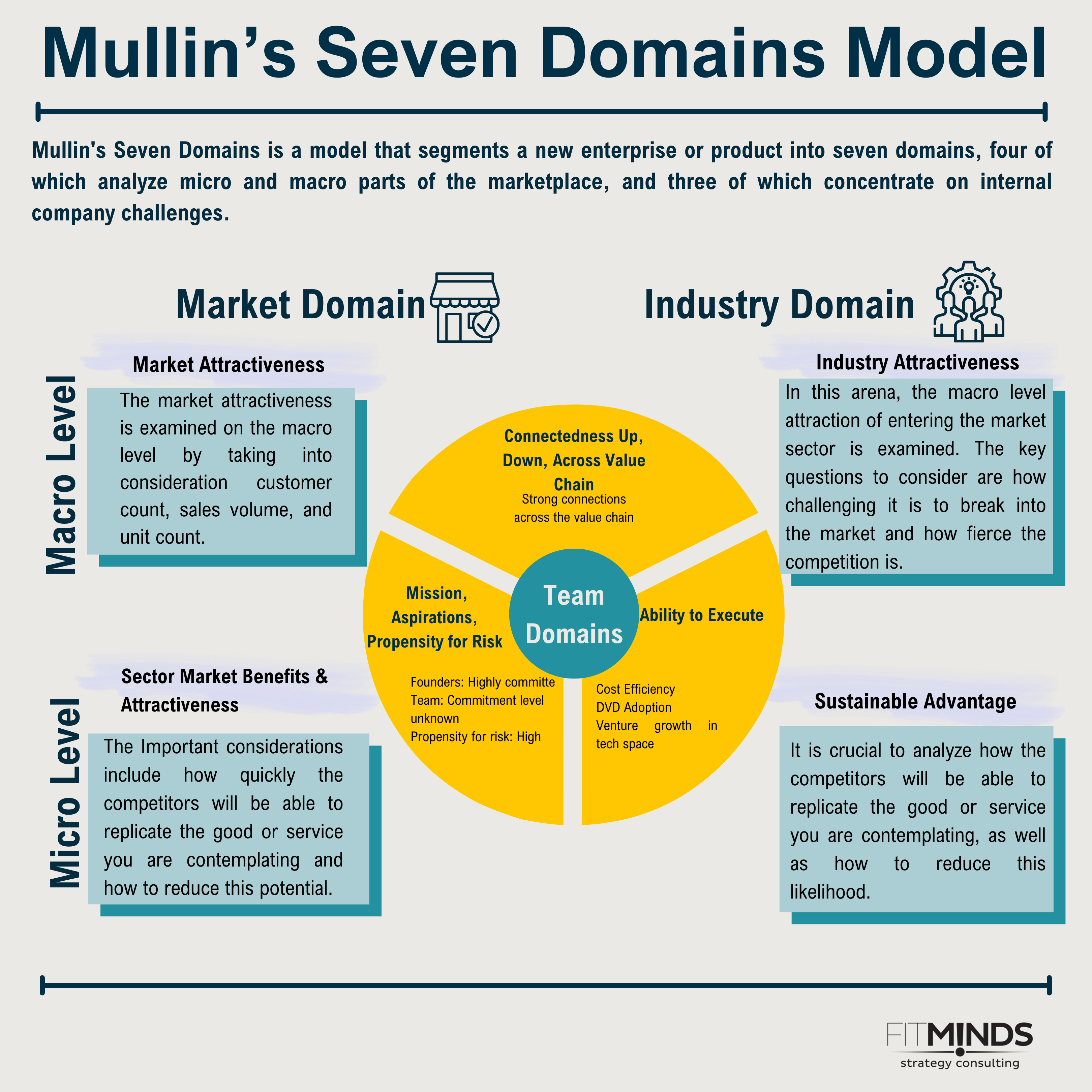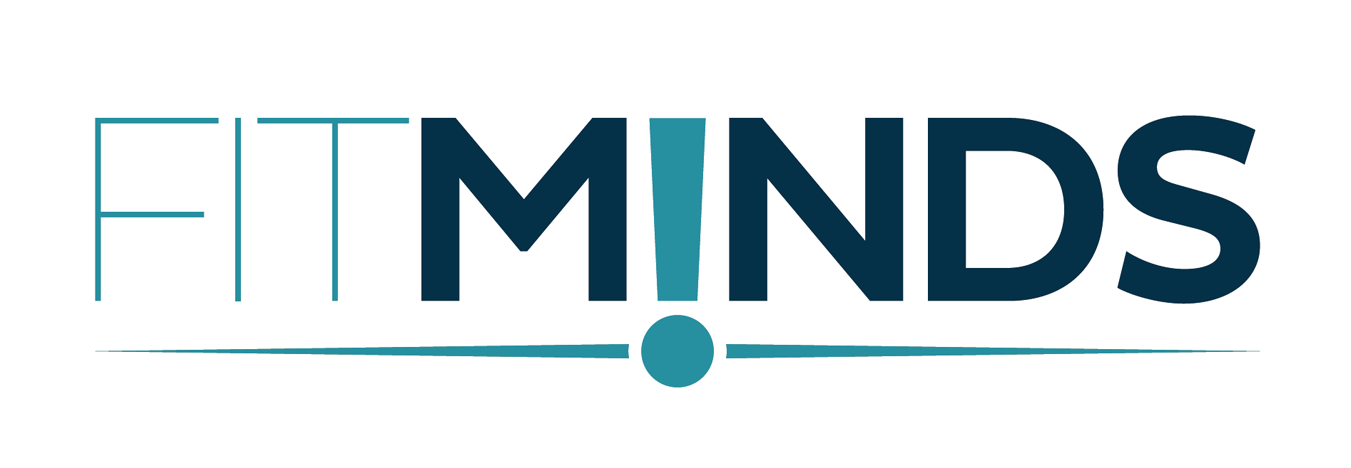Professor and businessperson John Mullins created the Seven Domains Model, articulated in The New Business Road Test. It was developed as a resource for company owners looking to launch their ventures in addition to the goal of being a user manual for organizations trying to determine whether to explore new product opportunities.
Main Benefits of Mullin’s Seven Domains Model
Mullin’s Seven Domains Model helps you:
- Analyze the market and develop effective methods
- Increase your competitiveness
- Foresee the difficulties and obstacles you could experience
- Examine your ideas from different viewpoints

Explanation of Mullin’s Seven Domains Model
Mullin’s Seven Domains is a model that segments a new enterprise or product into seven domains, four of which analyze micro and macro parts of the marketplace, and three of which concentrate on internal company challenges.
- Market Domain/Macro Level: Market Attractiveness:
The market attractiveness is examined on the macro level by taking into consideration customer count, sales volume, and unit count. It also looks at current growth and the likelihood that earlier gains will sustain. This research primarily determines if the market is growing steadily enough to welcome new products or if it is decelerating.
- Market Domain/Micro Level: Sector Market Benefits and Attractiveness
This area mainly deals with to which extent a market is attractive to enter on a micro level. Important considerations include how quickly the competitors will be able to replicate the good or service you are contemplating and how to reduce this potential. Consider acquiring data such as sales data or prospective customer insights.
- Industry Domain/Macro Level: Industry Attractiveness
In this arena, the macro-level attraction of entering the market sector is examined. The key questions to consider are how challenging it is to break into the market and how fierce the competition is. Additionally, one should consider how intense the rivalry is and whether ideas and strategies are disrupting the competitors. Finally, this evaluates how a new product or service being explored could be impacted by the industry’s power of buyers and suppliers as well as their capacity to establish their terms.
- Industry Domain/Micro Level: Sustainable Advantage
The final industry sector to consider at the micro level is the Sustainable Advantage. It is crucial to analyze how the competitors will be able to replicate the good or service you are contemplating, as well as how to reduce this likelihood. Look at any potential benefits on each side, such as patents, technical innovations, and financial support.
- Team Domain: Mission, Aspirations, Propensity for Risk
The analysis now focuses internally on the group working on launching the enterprise. It is crucial to examine how committed individuals and the leadership are to the proposition under consideration. The team’s willingness to put in much effort to carry the concept through, as well as its ability to tolerate the degree of risk involved, are other important considerations.
- Team Domain: Ability to Execute on Critical Success Factors
This domain examines if the internal team in place can deliver on the new product’s or service’s Critical Success Factors. At this point, the key questions to ask about the internal team is regarding who oversees making decisions that can dramatically hurt or assist the firm in flourishing. Consider which roles can be filled to cover skill or decision-making gaps, and then try to minimize them.
- Team Domain: Connectedness Up, Down, Across Value Chain
The interactions between suppliers, investors, customers, distributors, and competitors are examined in this last area. To prevent future conflicts or to get equipped to deal with them, it is crucial to investigate these links and assess how they could benefit or harm the firm under consideration.
How to Apply Mullin’s Seven Domains Model?
Evaluate the macroeconomic factors that can influence your operations using PESTEL Analysis. This provides a structured way of assessing the impact of several different elements on the business environment. Business Model Canvas helps you to create a canvas of your business and adjust your strategy accordingly.
Generate capable and sufficient strategy via PORTER’S GENERIC STRATEGIES. Use ADL Matrix to assess the overall strength of your product portfolio.
Maintain and expand your current business by using BCG Matrix or Growth-Share Matrix as it assesses your portfolio and optimizes your investments. Use Break-Even Analysis to evaluate the feasibility of your business.
Additional Tips and Readings
- TOWS Analysis helps you to investigate and analyze Strengths, Weaknesses, Opportunities, and Threats that a business must confront.
- CAGE Distance Framework assists you in adjusting your home market strategies to your candidate market.
- Mckinsey’s Three Horizons of Growth helps you ensure sustainable growth and balance your current business and growth strategies.
Contact us to analyze your new business’s feasibility via Mullin’s Seven Domains Model.



13 comments
Pingback: cheap androxal saturday delivery
Pingback: cheapest buy enclomiphene canada low cost
Pingback: how to buy rifaximin cost australia
Pingback: purchase xifaxan cheap online canada
Pingback: purchase staxyn american express
Pingback: online order avodart generic usa
Pingback: what is the price of dutasteride
Pingback: flexeril cyclobenzaprine without prescription
Pingback: buying gabapentin generic extended release
Pingback: purchase fildena generic best price
Pingback: how to buy itraconazole usa online pharmacy
Pingback: opravdu kamagra funguje
Pingback: kamagra prescrire nato medicament
Comments are closed.